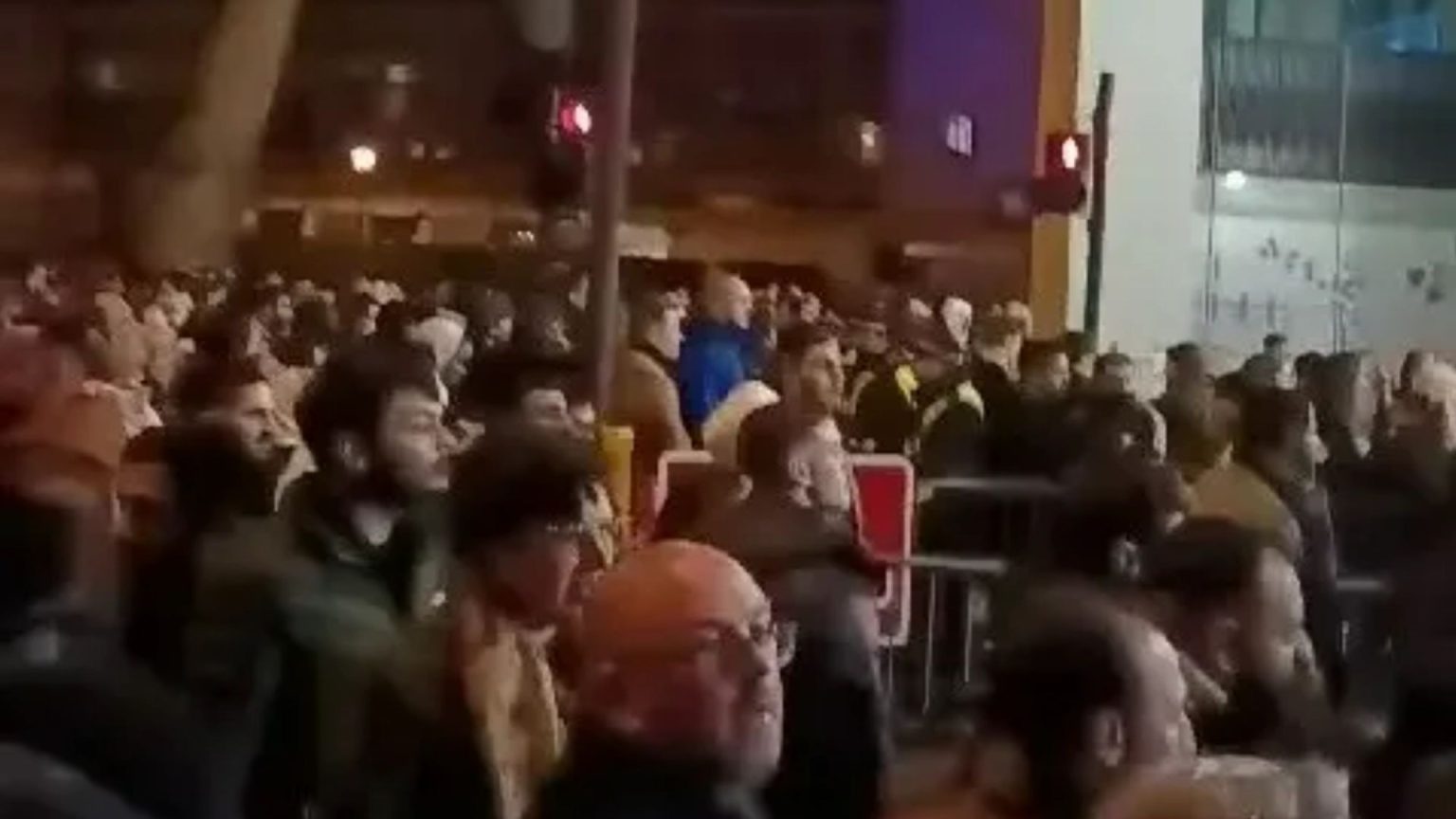The New Year’s Eve fireworks display in London, intended as a beacon of hope and celebration for 2025, was marred by a chaotic breach of security barriers approximately an hour before the main event. On Victoria Street, large groups of individuals, described by witnesses as “thugs” and “yobs,” forcefully pushed their way past security personnel and police, creating a dangerous and unruly scene. Video footage captured the escalating tension, showing a growing crowd becoming increasingly agitated despite the presence of numerous high-visibility marshals attempting to maintain order. Suddenly, the crowd surged forward, overwhelming the security measures and stampeding towards the Thames Embankment, the prime viewing location for the fireworks. Witnesses reported a complete disregard for safety, with individuals pushing, shoving, and acting violently, creating a sense of lawlessness and fear among those present. Despite the evident breach of security and potential danger to the public, no arrests were made at the time, fueling the perception of a lack of control and order.
The incident raises serious concerns about the effectiveness of security measures implemented for the event. Despite the ticketed nature of the prime viewing areas, with tickets costing up to £50, a significant number of individuals apparently gained unauthorized access due to the barrier breach. This not only represents a financial loss for the organizers but also raises questions about the planning and resource allocation for crowd management. The apparent ease with which a large group of individuals could overcome the security measures points to potential vulnerabilities that need to be addressed in future events. The lack of immediate arrests further underscores the apparent difficulty authorities faced in controlling the situation, potentially emboldening further unruly behavior.
The chaotic scenes unfolded against the backdrop of a meticulously planned and technologically advanced fireworks display. The show, themed around “hope,” featured over ten minutes of continuous fireworks, a synchronized light show, and a soundtrack highlighting popular artists like Charlie XCX, Sabrina Carpenter, and Ellie Goulding. The event also included commemorative elements, such as a tribute to the 80th anniversary of D-Day featuring Dame Vera Lynn, an appearance from the beloved children’s character Paddington Bear, and a celebration of the London Eye’s 25th birthday. The stark contrast between the carefully orchestrated spectacle and the uncontrolled breach of security highlights the disruptive impact of the incident on the overall experience for many attendees.
The motivations behind the sudden surge remain unclear. Speculation might include impatience, a desire to secure a better viewing spot, or even a deliberate attempt to disrupt the event. However, the lack of clear information underscores the need for a thorough investigation into the incident. Understanding the factors that contributed to the breach is crucial for preventing similar occurrences in the future. This includes assessing the adequacy of the security plan, the training and preparedness of security personnel, and the effectiveness of communication and crowd control strategies.
The incident serves as a stark reminder of the challenges involved in managing large public events, particularly in the current security climate. Balancing the need for security with the desire to create an enjoyable and accessible experience for attendees is a complex task. The events of New Year’s Eve in London highlight the importance of continually reviewing and improving security protocols, ensuring that adequate resources are allocated, and that personnel are effectively trained to respond to potential disruptions. Learning from this incident is crucial for maintaining public safety and ensuring that future events can proceed without such chaotic disruptions.
Moving forward, a thorough review of the security arrangements for the New Year’s Eve fireworks display is essential. This review should encompass all aspects of crowd management, from initial planning and risk assessment to the deployment and training of security personnel. It should also consider the effectiveness of communication strategies and the procedures for responding to unexpected incidents. Identifying the root causes of the security breach and implementing appropriate corrective actions will be crucial for restoring public confidence and ensuring the safety and enjoyment of future events in the capital. The goal should be to create a secure and welcoming environment where everyone can celebrate without fear of such disruptive and potentially dangerous incidents.




